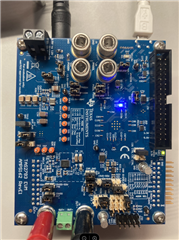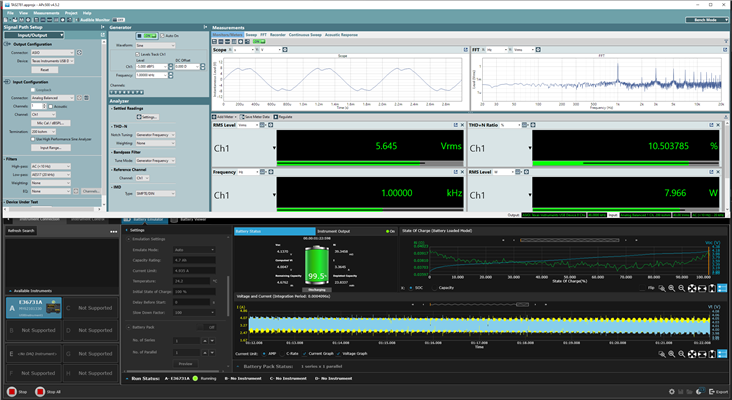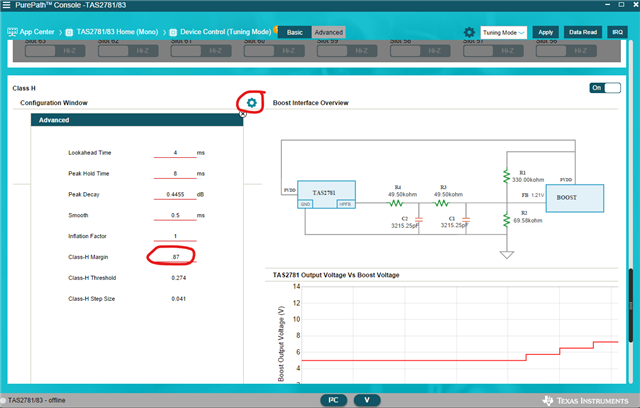Other Parts Discussed in Thread: PPC3-EVM-MB
Hello,
I am working on a new portable speaker that requires high efficiency. I purchased a TAS2781EVM for evaluation and am having significant issues with it. I have followed along on the quick start but am running into a few issues.
1. I am only able to get out a watt or so of power into a 4Ω dummy load. And pushing the input signal to 0dBFS is a guaranteed over current event as reported by the status registers.
- Is this due to the smart speaker characterization?
2. I am only seeing ~7V on the PVDDH supply. This is regardless of whether or not I enable Class-H operation and populate J14. I basically always have 7V.
- The Schematics show that this should be 12v nominal, I have not gone in and measured the resistor values in the FB path, but I am assuming the EVM came in a properly configured state.
Before I spend a ton of time debugging what I was hoping to be a quick evaluation, is there a default configuration that should be used for evaluation? Would be really helpful if there was a starting point for this EVK that did not require a drive in an enclosure (does not yet exist). For evaluation I am looking for the following:
- Flat EQ 20Hz-20kHz
- No DRC
- 0dBFS in = 0dBFS out
- Stable into a 4Ω purely resistive load (maybe this is my issue)
- Class H operation and Y bridge enabled to run off of a 3.6V nominal Li-ion battery.






